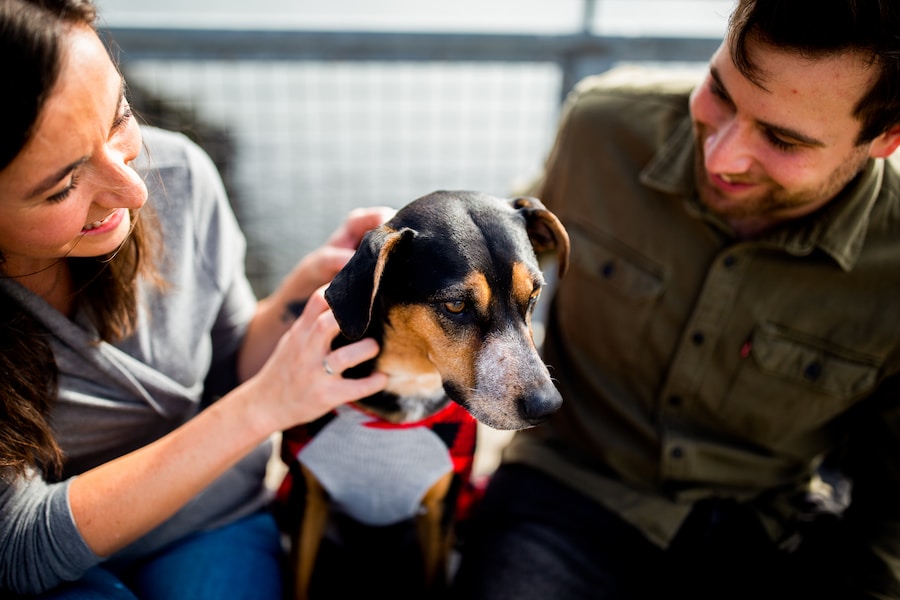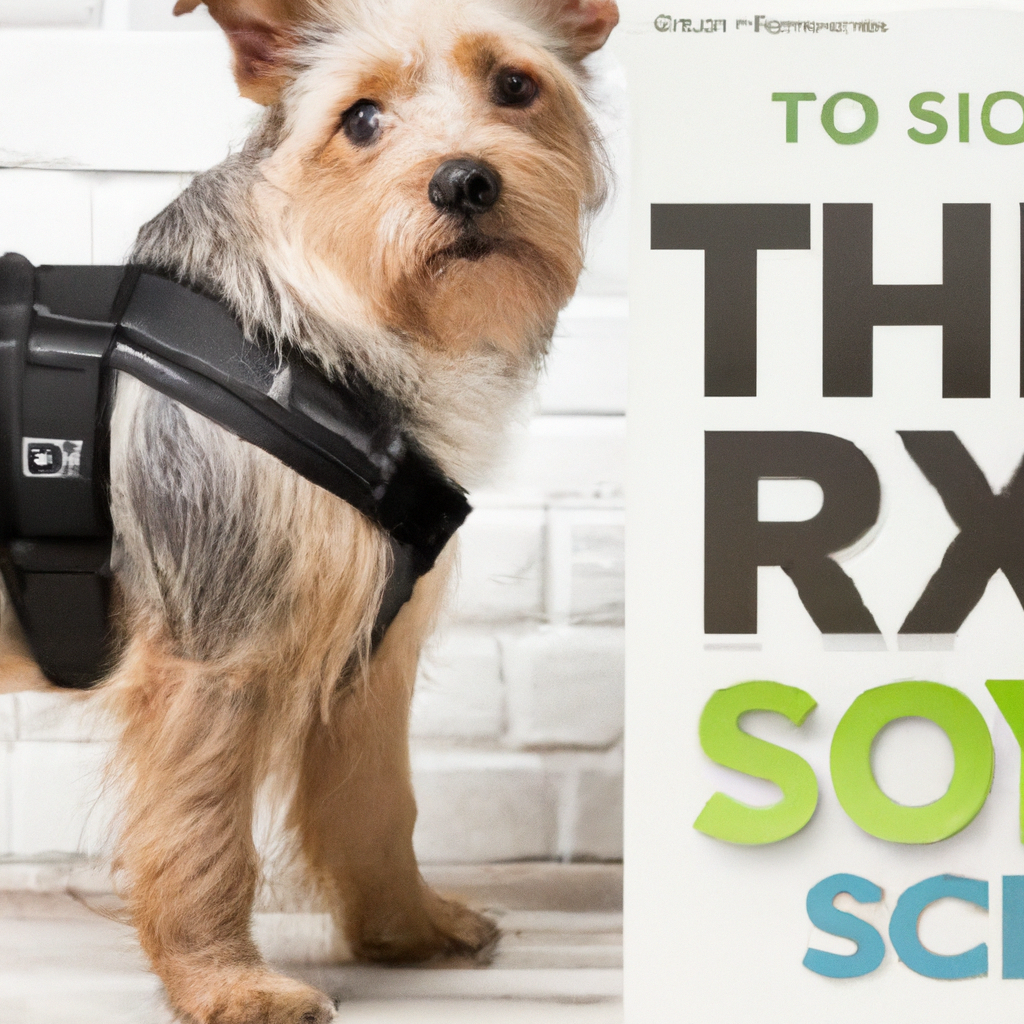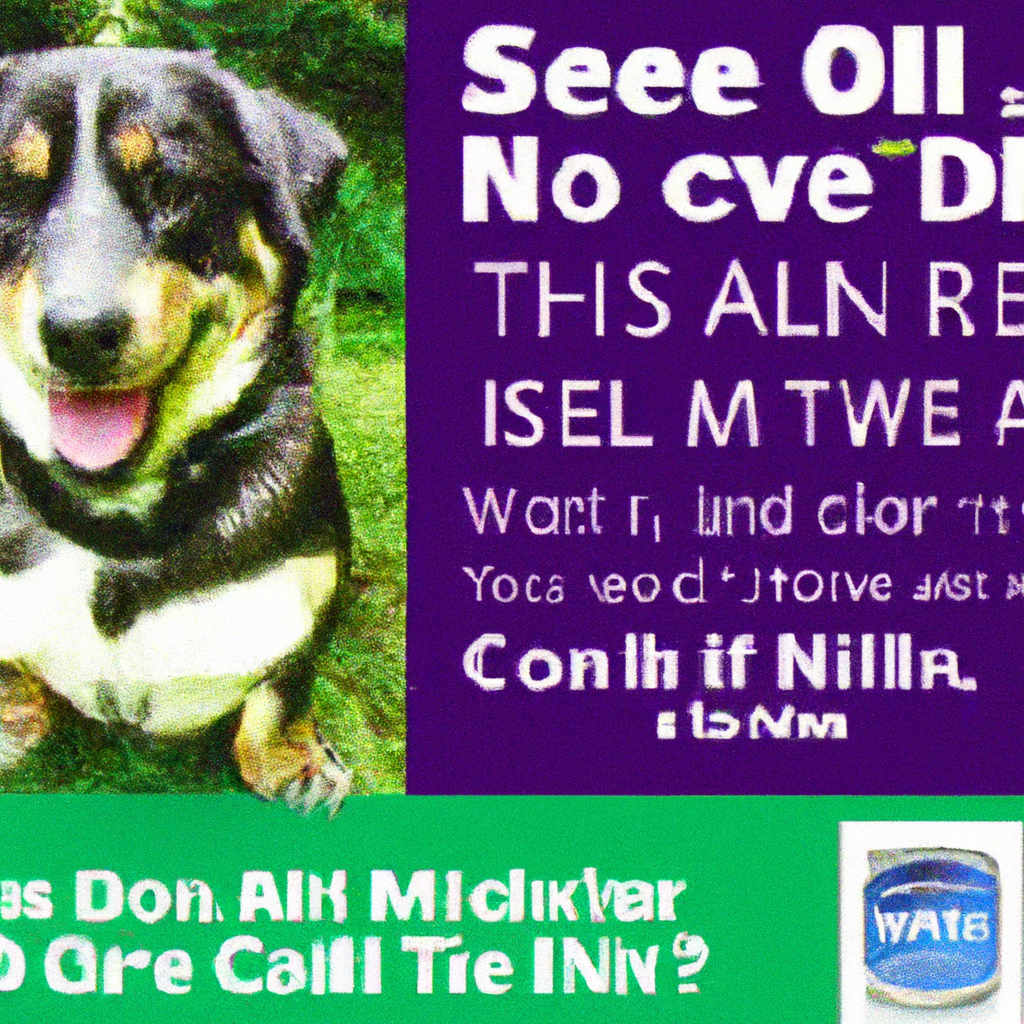If you’ve ever wondered whether your furry friend is carrying a few extra pounds, you’re not alone. Many pet owners want to ensure their dogs are healthy and happy, and maintaining a healthy weight is a crucial part of that. But how can you tell if your dog is overweight? In this article, we’ll outline some simple ways to assess your dog’s weight, from visual cues to physical examinations. By understanding the signs of overweight dogs, you can take proactive steps to help them achieve a balanced and active lifestyle.

Understanding the Ideal Weight for Dogs
When it comes to our furry friends, maintaining a healthy weight is crucial for their overall well-being. Just like humans, dogs can struggle with weight issues, which can lead to a variety of health problems. Understanding the ideal weight for your dog is the first step towards ensuring their optimal health and happiness.
Breed-specific weight guidelines
Different dog breeds have different body structures and metabolism rates, which means their ideal weight can vary significantly. It’s important to research and consult breed-specific weight guidelines to get a general idea of what weight range your dog should be in. Factors such as age and gender may also influence weight considerations within a specific breed.
Body condition scoring
In addition to breed-specific guidelines, body condition scoring is a useful tool in evaluating a dog’s weight. This scoring system assesses the amount of fat covering a dog’s ribs and backbone, as well as the overall shape of their body. By visually and physically examining your dog, you can determine whether they are underweight, overweight, or in an ideal weight range.
Importance of maintaining a healthy weight
Maintaining a healthy weight is not just about appearances; it has a significant impact on your dog’s overall health and longevity. Dogs who are at an ideal weight are less prone to joint problems, diabetes, heart disease, and high blood pressure. They also tend to have more energy, better mobility, and a higher quality of life. By understanding and managing their weight, you can help your dog live a happier and healthier life.
Common Signs of an Overweight Dog
Recognizing the signs of an overweight dog is crucial to addressing the issue before it escalates. Here are some common signs that indicate your dog may be carrying excess weight:
Visible fat deposits
One of the most obvious signs of an overweight dog is visible fat deposits. These may be seen as bulges around the hips, chest, or neck. If your dog’s body is no longer visibly contoured, it’s a clear indication that they need to shed some pounds.
Lack of a noticeable waistline
A healthy dog should have a noticeable waistline when viewed from above and from the side. If your dog’s body appears rectangular or barrel-shaped, it’s a sign that they may be carrying extra weight.
Difficulty feeling the ribs
Gently running your hands over your dog’s ribcage should allow you to feel the ribs with minimal pressure. If you have trouble feeling the ribs, or if they are heavily padded with fat, your dog may be overweight.
Breathing and mobility issues
Overweight dogs may also experience difficulty breathing, especially after physical activity or exertion. Additionally, they may have trouble getting up or walking for extended periods due to the strain extra weight puts on their joints.
Exercise intolerance
If your dog gets tired quickly during walks or is unwilling to engage in physical activities they once enjoyed, it could be a sign that their weight is inhibiting their ability to exercise comfortably.
Assessing Your Dog’s Weight
To accurately assess your dog’s weight, it’s important to use a combination of visual observation and physical examination techniques. Here are a few methods you can try:
Visual examination
Start by visually examining your dog from different angles. Look for signs of visible fat deposits, lack of a noticeable waistline, and an overall rounded or blocky appearance. While this method can provide a general idea, it’s important to combine it with other assessment techniques for a more accurate evaluation.
Rib test
Gently run your hands over your dog’s ribcage. You should be able to feel their ribs with minimal pressure and a light layer of padding. If the ribs are difficult to feel or buried under excess fat, your dog may be overweight.
Abdominal tuck test
View your dog from the side and look for a visible tuck between their ribs and hindquarters. This tuck should create an upward slope towards the back end of their body. If your dog lacks this tuck and their abdomen appears round or sagging, it could indicate excess weight.
Weighing your dog
The most accurate way to determine your dog’s weight is to weigh them on a scale regularly. This provides precise measurements and allows you to track any changes over time. Consult with your veterinarian to determine an appropriate weighing schedule based on your dog’s specific needs.
Consulting a Veterinarian
While evaluating your dog’s weight at home is a good start, it’s essential to consult a veterinarian for professional advice. Here’s why:
Benefits of professional advice
Veterinarians are trained to assess a dog’s overall health, which includes evaluating their weight. They can provide expert guidance on the ideal weight range for your specific dog’s breed, age, and size. They can also tailor a weight management plan based on your dog’s individual needs.
Finding a trusted veterinarian
It’s important to find a veterinarian you trust and feel comfortable working with. Look for a licensed professional with experience in canine nutrition and weight management. Seek recommendations from friends, family, or local pet communities to find a reliable veterinarian who can guide you through your dog’s weight management journey.
Importance of regular check-ups
Regular check-ups with your veterinarian are essential, especially when addressing weight-related concerns. Your veterinarian can monitor your dog’s progress, provide ongoing support and guidance, and adjust the weight management plan as needed. These check-ups also allow for early detection of any underlying health issues that may contribute to weight problems.

Understanding the Health Risks of Obesity in Dogs
Obesity in dogs can lead to various health problems, significantly reducing their quality of life. It’s essential to be aware of these potential risks:
Joint problems
Carrying excess weight puts significant strain on a dog’s joints, leading to conditions such as arthritis and hip dysplasia. These conditions cause pain, discomfort, and mobility issues, making it difficult for the dog to enjoy physical activities.
Diabetes
Obese dogs are at a higher risk of developing diabetes, a chronic condition that affects their ability to regulate blood sugar levels. Diabetes requires careful management and can have serious long-term consequences for your dog’s health.
Heart disease and high blood pressure
Extra weight puts additional stress on a dog’s heart, increasing the risk of heart disease and high blood pressure. These conditions can lead to heart failure, breathing difficulties, and reduced overall cardiac function.
Decreased life expectancy
Studies have shown that obese dogs tend to have a shorter lifespan compared to dogs at a healthy weight. Obesity-related health issues can significantly impact a dog’s overall well-being and ultimately shorten their lifespan.
Creating a Healthy Diet and Exercise Plan
Once you have determined that your dog is overweight or at risk of becoming overweight, it’s time to create a tailored weight management plan. Here are some key factors to consider:
Determining the appropriate calorie intake
Consult with your veterinarian to determine the appropriate calorie intake for your dog. Factors such as age, breed, size, activity level, and health condition play a vital role in determining the right amount of calories your dog needs to achieve and maintain a healthy weight.
Choosing a balanced diet
Opt for a high-quality dog food that is balanced and meets your dog’s nutritional needs. Look for options that are specifically designed for weight management or consult your veterinarian for recommendations. Avoid feeding them table scraps, as these are often high in fat and calories.
Portion control
It’s important to measure your dog’s food portions accurately to avoid overfeeding. Follow the feeding guidelines provided on the dog food packaging or consult your veterinarian for guidance on portion sizes based on your dog’s weight loss goals.
Feeding schedule
Establish a consistent feeding schedule for your dog. Regular meal times help regulate their metabolism and prevent them from overeating. Avoid leaving food out all day, as this can lead to mindless snacking and weight gain.
Suitable exercise regimen
Incorporate regular exercise into your dog’s daily routine. The type and intensity of exercise will depend on your dog’s breed, age, and overall health. Consult with your veterinarian to determine a suitable exercise plan based on your dog’s specific needs and limitations.

Avoiding Common Mistakes in Managing Weight
While managing your dog’s weight, it’s important to avoid common mistakes that can hinder progress. Here are a few things to be mindful of:
Feeding too many treats or table scraps
Treats are an important part of training and rewarding your dog, but overindulgence can contribute to weight gain. Opt for healthier treat options or reduce the number of treats given. Avoid feeding table scraps, as these are often high in fat, salt, and spices that can be harmful to your dog’s health.
Ignoring recommended feeding guidelines
It can be tempting to overfeed or deviate from the recommended feeding guidelines, especially if your dog seems hungry. However, sticking to the appropriate portion sizes is essential for achieving and maintaining a healthy weight. Trust the guidance provided by your veterinarian and avoid the temptation to overfeed.
Inconsistent exercise routine
Consistency is key when it comes to exercise. Avoid irregular or sporadic exercise routines, as they can hinder progress and prevent your dog from achieving their weight loss goals. Establish a regular exercise routine and make it a priority in your dog’s daily life.
Making Lifestyle Changes
Successfully managing your dog’s weight requires making long-term lifestyle changes. Here are some helpful tips:
Gradual weight loss
It’s important to promote gradual weight loss in your dog rather than drastic drops. Rapid weight loss can have adverse health effects and may not be sustainable. Aim for a slow and steady weight loss of 1-2% of their body weight per week.
Involving the whole family
Engaging the whole family in your dog’s weight management journey ensures consistency and support. Make sure everyone understands the importance of maintaining a healthy weight for your dog and is actively involved in implementing the necessary changes.
Setting realistic goals
Set realistic goals for your dog’s weight loss journey. Consult with your veterinarian to determine a target weight range and develop a timeline to achieve it. Remember that every dog is different, and weight loss may vary based on individual factors.
Tracking progress
Keep track of your dog’s progress to stay motivated and monitor their weight loss journey. Regularly weigh your dog, take measurements, and document any changes in their body condition. Celebrate milestones and consult with your veterinarian to make any necessary adjustments to the weight management plan.

Additional Tips and Considerations
Here are a few additional tips and considerations to ensure your dog’s weight management journey is successful:
Age and activity level
Consider your dog’s age and activity level when developing their weight management plan. Puppies and senior dogs have different nutritional needs and exercise limitations compared to adult dogs. Consult with your veterinarian to tailor the plan based on your dog’s specific requirements.
Health conditions and medications
If your dog has any underlying health conditions or is taking medications, consult with your veterinarian before implementing a weight management plan. Certain health conditions may require dietary modifications or affect their ability to exercise.
Evaluating the dog food quality
Ensure that the dog food you choose meets the appropriate nutritional standards. Look for options that contain high-quality ingredients, are free from fillers and artificial additives, and have the necessary nutrients for weight management.
Encouraging mental stimulation
In addition to physical exercise, mental stimulation is essential for your dog’s overall well-being. Engage in activities that challenge their brain, such as puzzle toys, obedience training, or interactive play sessions. Mental stimulation can help prevent behavioral issues that may arise due to weight restrictions.
Incorporating playtime
Make playtime a regular part of your dog’s routine. Engage in activities such as fetch, tug-of-war, or hide-and-seek, as they not only provide physical exercise but also strengthen the bond between you and your dog.
Conclusion
Understanding and managing your dog’s weight is an essential aspect of responsible pet ownership. By being aware of the signs of overweight dogs, conducting weight assessments, consulting a veterinarian, and creating a healthy diet and exercise plan, you can help your furry friend achieve and maintain an ideal weight. Remember to make lifestyle changes, avoid common mistakes, and involve the whole family in the journey. With proper care and attention, you can ensure your dog lives a happy, healthy, and fulfilled life.





